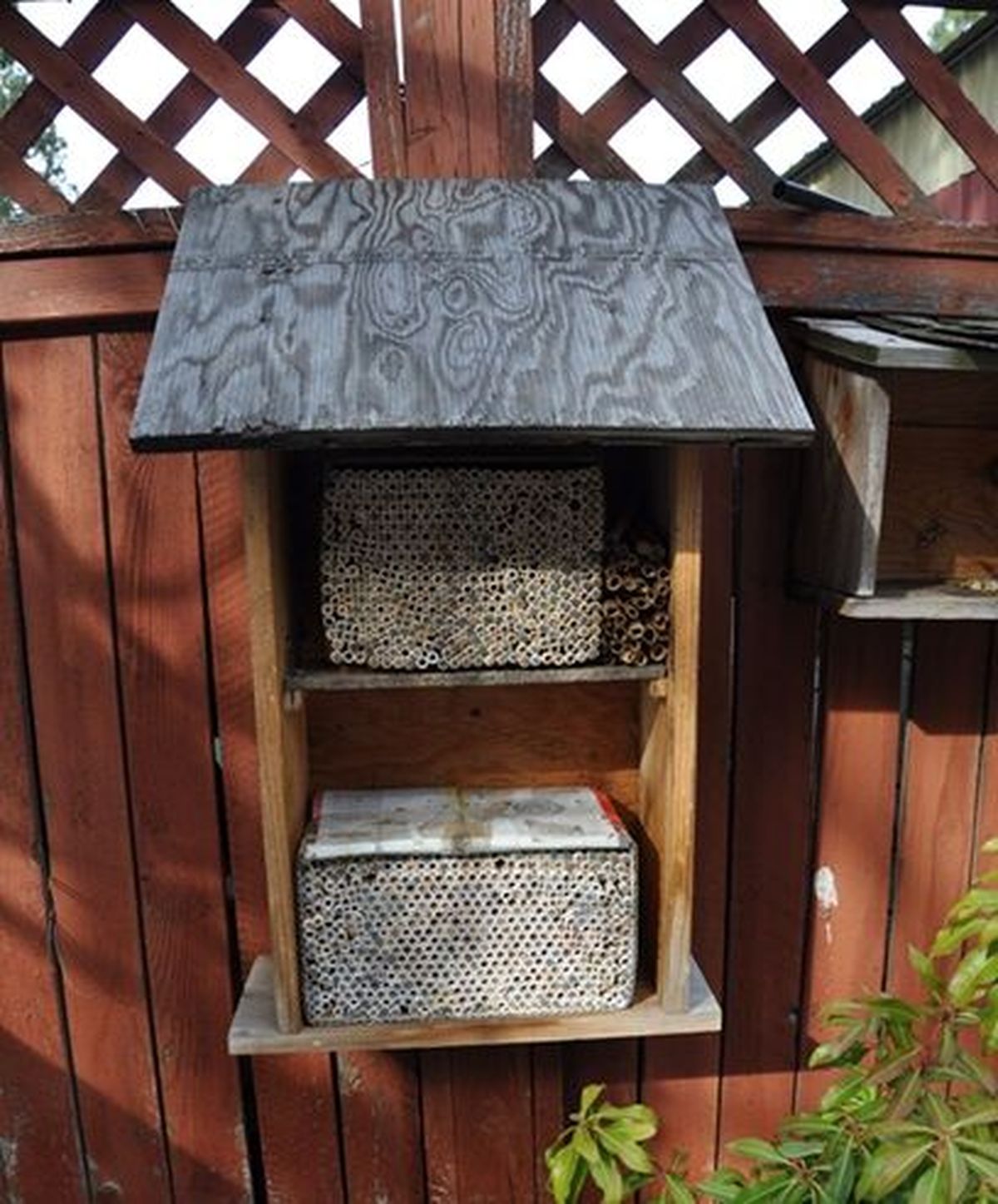Gardening; Mason bees will begin busy work in March

Spring is getting closer and with it planning for early spring projects. Looks like gardening is going to still be the go-to hobby for entertainment for the foreseeable future. One of the projects that needs to be tended now is preparing habitat for mason bees. The mason bees will be coming out in late March as soon as the weather warms to their liking.
If you have been interested in learning about mason and leafcutter bees, the WSU Spokane County Master Gardener is offering a virtual class, Attracting and Keeping Native Mason Bees, on Feb. 11 from 6 p.m. to 8 p.m. via Zoom. The cost is $15 per family and yours truly will be teaching the class. This is a great project for kids to get involved in because mason bees are solitary and don’t usually sting.
Mason bees emerge from their nests as soon as temperatures are reliably above 50 degrees and as the early fruit trees start blooming. That means you need to have nesting spaces ready for them by then. Mason bees build nests in hollow plant stems, beetle holes, holes in logs and anywhere else they deem comfortable. Once they emerge, they will visit a wide variety of plants including fruit trees to collect pollen for their nests.
Mason bees are more efficient pollinators than honeybees because they carry pollen all over their bodies and are smaller so they can get deeper into a flower. A colony of 250 mason bees can pollinate as many flowers as a hive of 10,000 honey bees. The bees will collect pollen and build nests until about mid-June when the current year’s bees die off and the new larvae hibernate until next March.
Establishing and maintaining a mason bee colony isn’t difficult or expensive. All you need is a yard, a nesting site that faces south and some easy to gather nesting materials. A nesting box for mason bees is a simple roofed shelter that is placed on a wall so that it gets morning sun to warm up the bees as they emerge.
The box can be filled with 6-inch pieces of any hollow plant stalks that are about 5/16-of-an-inch in diameter such as raspberry canes, elderberry stems, Japanese knotweed, large grasses, bamboo or flower stalks. An alternative is 6-inch blocks of wood drilled with a series of holes. After the bees find it, the female lays her eggs with a bit of pollen and then seals the eggs in with mud. When she finishes filling a tube, she caps the end off with more mud.
You can also buy nesting tubes lined with paper straws and straws or cocoons of dormant bees from commercial suppliers to jump start your nest. The nesting tubes and the dormant bees are put out in the shelter and will emerge at the right time. The newly emerged bees will return to the nest site and start building new nests.